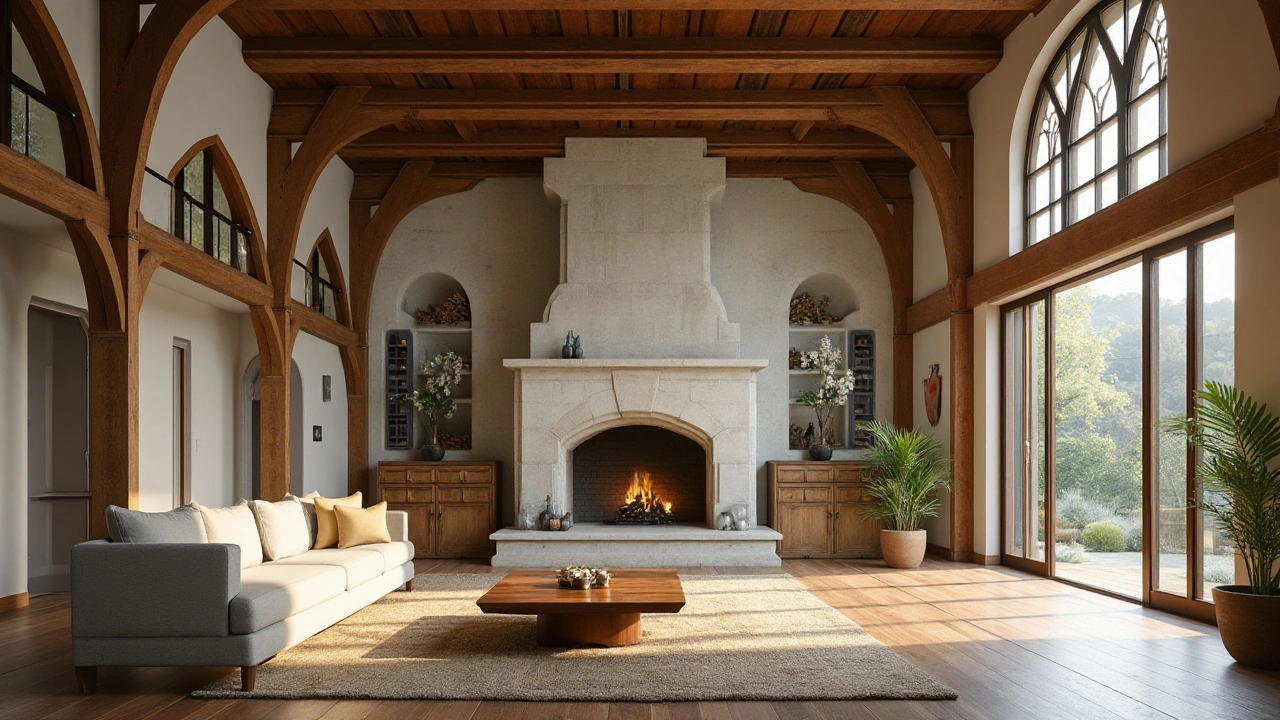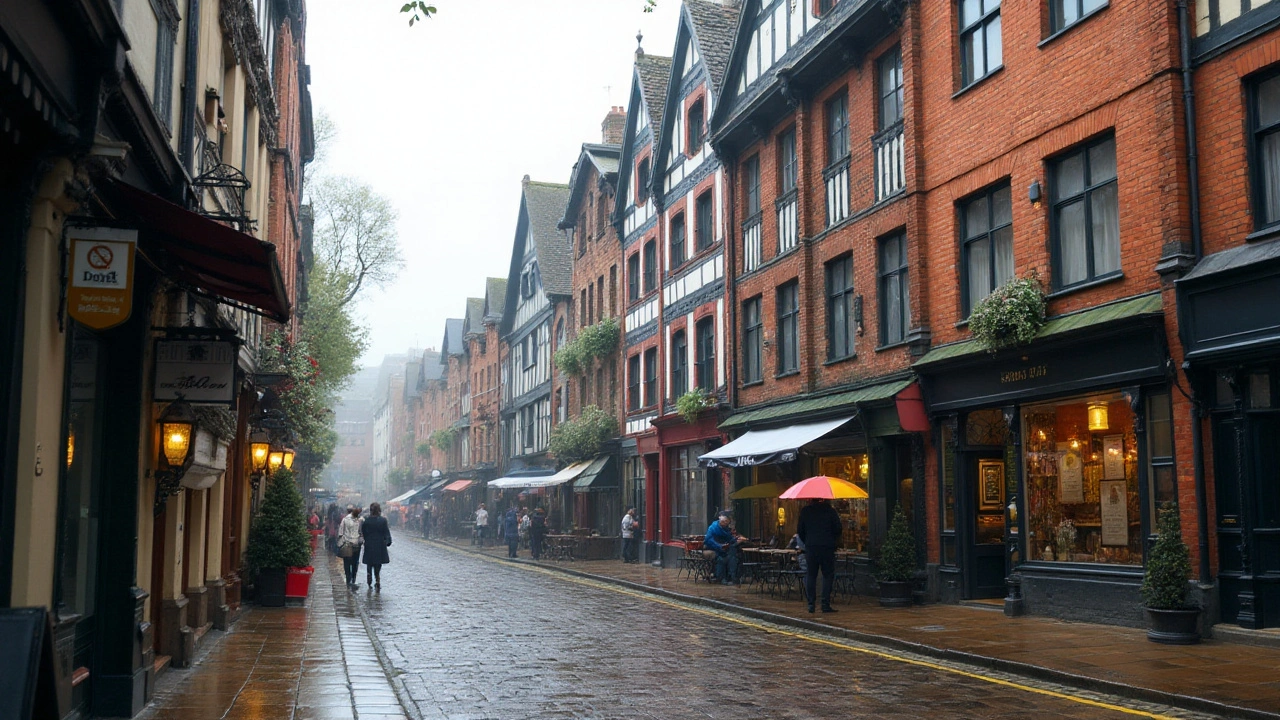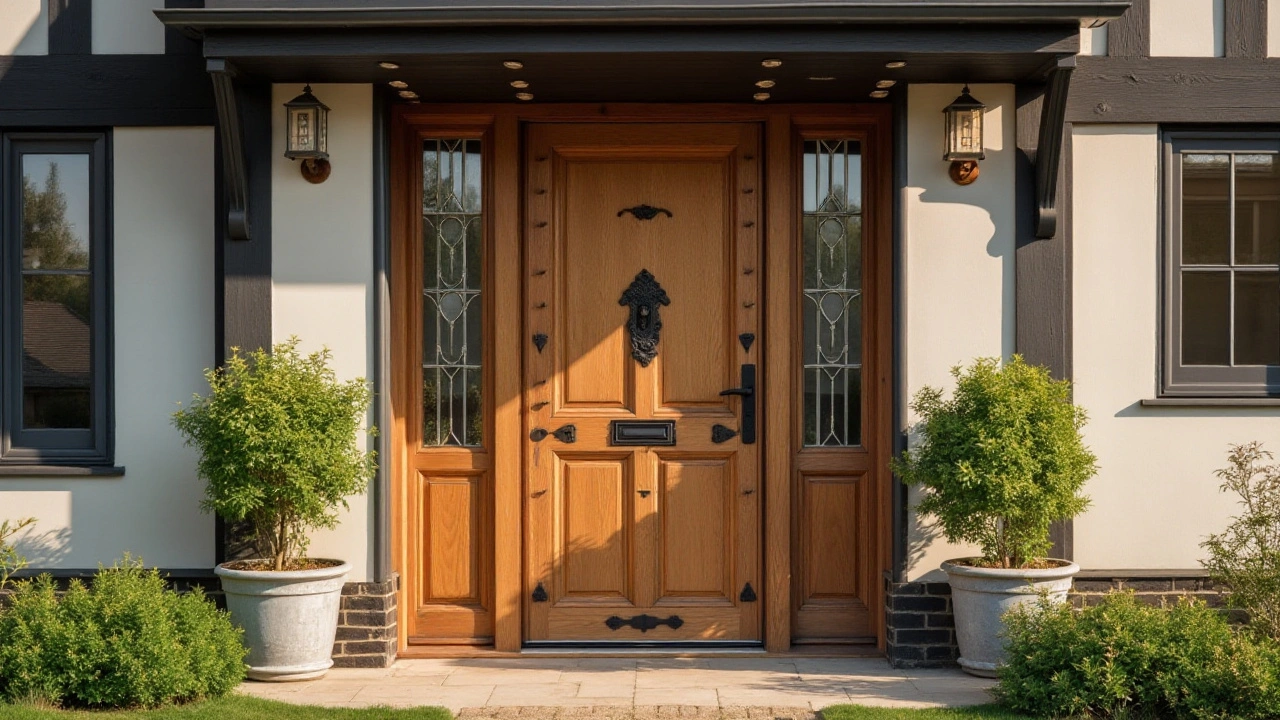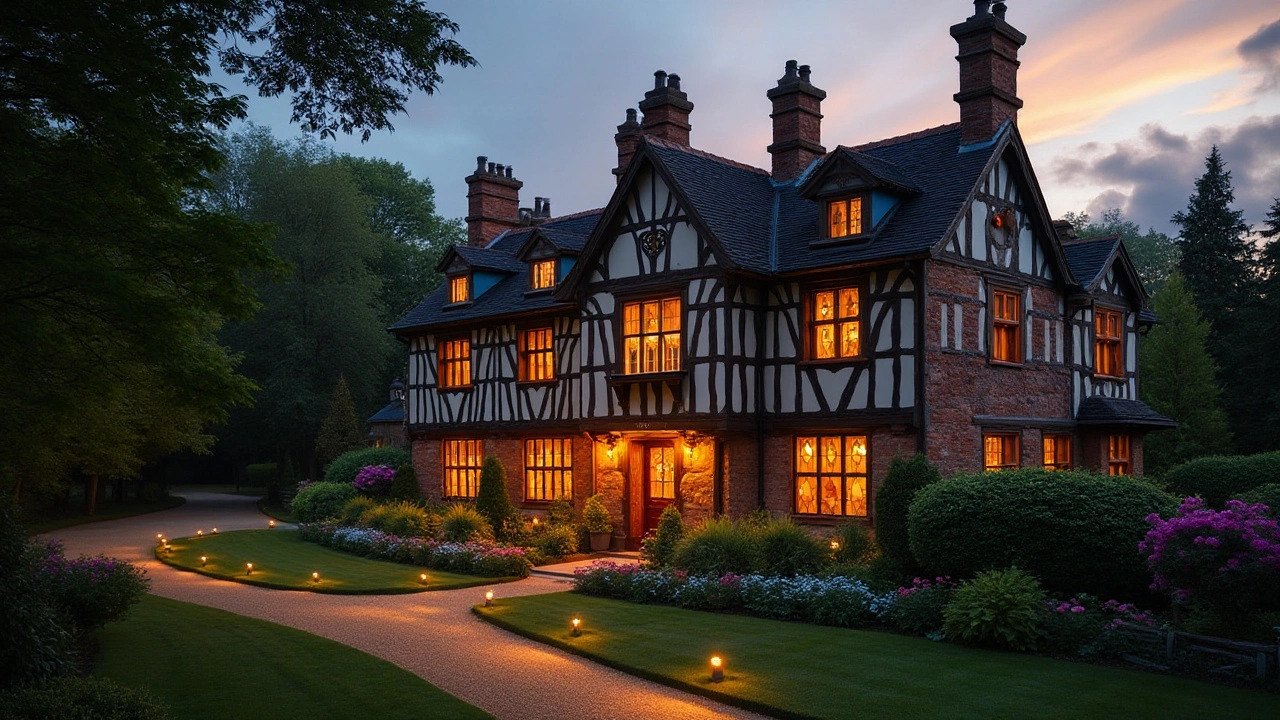Tudor architecture may seem like a relic of a bygone era, but its impact on the world of design is remarkably enduring. Emerging from the reign of the Tudors in England, this style is easily recognized by its signature elements such as half-timbered exteriors, tall narrow windows, and intricately carved doorways. These features lend a fairy-tale charm to mansions, cottages, and even public buildings.
Today, its influence is palpable in countless contemporary designs, as architects and designers draw inspiration from its balance of form and function. The unique blend of medieval and renaissance elements offers a rich tapestry to weave into modern contexts. This article unearths the secrets behind Tudor architecture's lasting allure and explores how we can integrate its iconic elements into the spaces we inhabit now.
- Origins of Tudor Architecture
- Key Features and Characteristics
- Global Influence and Modern Interpretations
- Incorporating Tudor Elements in Contemporary Design
Origins of Tudor Architecture
Tudor architecture emerged during the late medieval period of England, specifically spanning from 1485 to 1603, when the Tudor dynasty was reigning. This era was a bridge of sorts, transitioning from the medieval Gothic to a more fluid Renaissance style. The architectural style was heavily influenced by the socio-political backdrop of a relatively peaceful time, allowing the English aristocracy to focus on perfecting and embellishing their residences rather than fortifying them against frequent raids. This shift is well symbolized by the structures built during this period—homes designed for elegance and comfort over defense. Tudor architecture is remarkable because it introduced ideas such as domesticity and coziness into large structures, concepts that were rather novel at the time.
One of the hallmarks of Tudor architecture is its use of timber framing, which was both practical and stylish. Timber was readily available and affordable, making it a logical choice for home builders of the time. Houses were framed with these beams, and any spaces between them were filled with materials like wattle and daub. A striking characteristic is the 'half-timbering' technique, where the wooden frames are visible against whitewashed plaster or brickwork. This distinctive look not only improved aesthetics but also visually indicated the prosperity of the house owner. As architectural historian Dan Cruickshank noted, "Tudor houses were not meant to be castles, but statements of power and wealth displayed through intricate designs."
The influence of the Tudor style was not limited to the English countryside. As Britain ventured into global trade and exploration, elements of this architectural style found their way to various parts of the world. This dissemination was facilitated by the colonial ambitions of the British Empire, which were at their nascent stages during the Tudor period. In new colonies, houses often mimicked the Tudor charm, modified to suit local climates and materials. These adaptations helped Tudor architecture make its lasting mark and pave the way for what would later influence even American colonial architecture. The style's allure transcends its time, finding relevance in modern interpretations, like the picturesque mock-Tudor homes that dot suburban landscapes around the globe today.

Key Features and Characteristics
Tudor architecture remains one of the most captivating styles that an array of enthusiasts and designers worldwide admire. Its visually intriguing elements easily set it apart from other architectural trends. One of the standout features is the half-timbering technique, which involves large wooden beams visibly framing the building's façade. This approach not only creates an aesthetically pleasing contrast with the infill materials, typically masonry or herringbone brickwork, but also provides structural integrity. The impressive framework often plays from its robust character, evoking a sense of strength and historical significance that captivates onlookers.
Another hallmark of Tudor architecture is its steeply pitched roofs, typically adorned with multiple gables that provide a dramatic skyline silhouette. This design was not merely for aesthetic purposes; these roofs were excellent at shedding rainwater, an essential feature considering England's damp climate. The picturesque appearance, along with functional design, has led many modern structures to borrow this feature and incorporate unique gabled facades that echo the Tudor style.
"The charm of Tudor architecture lies in its remarkable blend of medieval romance and practical resilience," said renowned historian Bridget Hill, capturing the essence of why this style has persisted through the ages.
Tall, narrow windows with diamond-shaped leaded glass panes are also distinctive to Tudor buildings. These windows often feature wooden or stone mullions, adding layers of intricate detail to the exterior. They might not allow a flood of light, but the play of sunlight through the patterned glass creates a unique, cozy ambiance inside. Such windows are frequently incorporated into today's structures to foster intimacy and old-world elegance, reminding inhabitants of simpler times.
Moreover, the Tudor style is well-known for its high chimneys, often with elaborate, decorative brickwork that renders them as much a focal point as a functional heating source. These chimneys provided an important structural element, usually flanked by chimney pots that could be intricately designed. They rose skywards with a sense of grandeur, making them highly desirable to replicate in luxury homes today. The romance of a roaring fire in a large, finely crafted fireplace transcends time, continually inspiring contemporary interior designs.
To encapsulate the essence of Tudor architecture and create an inviting contrast, doors and entryways typically feature arched shapes or 'Tudor arches'—a flattened curve bridging medieval pointed styles and classical round arches. Often decorated with stone carvings or wooden details, these entranceways create a warm yet majestic first impression. Many designers today draw from these iconic entryways to craft grand entrances that are both imposing and welcoming to homeowners seeking that signature historical charm.

Global Influence and Modern Interpretations
The journey of Tudor architecture from the English countryside to becoming a global sensation is a story of transformation and adaptation. Its distinctive elements, once unique to the aristocratic estates and quaint villages of England, are now woven into the fabric of architectural styles worldwide. This fusion of medieval and renaissance artistry captured the imagination of designers and builders throughout the centuries. It is not uncommon to find bits of Tudor charm tucked into suburban homes in the United States or reflected in the elaborate details of historical renovations in Europe and beyond.
As globalization increased, so did the popularity of this architecturally intriguing style, often sparking in areas where nostalgia and a knack for storytelling occupy a large part of cultural identity. For instance, in America, the Tudor Revival of the early 20th century was sparked by the Arts and Crafts movement, emphasizing authenticity and craftsmanship. This movement found an eager audience among those who cherished the romanticized ideas of a simpler, more handcrafted past. Today, Tudor-style homes dot the landscape of American suburbs, from New England to California, each one a testament to the timeless appeal of historical design.
In Asia, the allure of Tudor architecture can be seen in luxury hospitality and educational institutions, where there is a penchant for blending western classic styles with local touches. Architects incorporate the intricate woodwork and steep gables that are emblematic of Tudor design to evoke elegance and grace. In India, for example, several esteemed universities make use of this aesthetic to lend a sense of prestige and tradition to their campuses. The adaptability of Tudor elements to suit various climates and cultures is a testament to its enduring relevance.
"The Tudor style’s versatility lies in its balance of warmth and fortification, a balance that modern architecture strives to achieve," says John Smithson, a renowned architectural historian and expert on historical design influences.
As urban and suburban design priorities shift towards sustainability and efficiency, modern interpretations of Tudor architecture have evolved. Sustainability experts advocate for using these design elements because of their compatibility with environmentally friendly practices. For example, the characteristic timber framing, when sourced from sustainable forests, offers a renewable building option, while the stone constructions common in Tudor buildings provide natural insulation. Such adaptability allows Tudor-inspired homes to meet modern needs without sacrificing their distinctive aesthetic appeal.

Incorporating Tudor Elements in Contemporary Design
In today’s ever-evolving design landscape, blending the past with the present has become a hallmark of innovation. Tudor architecture, with its fairytale-like charm and robust structural elements, finds a home in the heart of contemporary design. As we strive to create spaces that offer both aesthetic appeal and functionality, Tudor elements present a unique opportunity to embrace history while meeting modern needs. Such integration not only maintains the nostalgic aspects of these styles but breathes new life into our living and working environments.
One key aspect of incorporating Tudor design is the use of materials that echo the textural richness of the style. Exposed wood, for example, is a nod to the iconic half-timbering seen in original Tudor structures. Today, architects might use wooden beams in open-plan living spaces to create a visual separation that’s subtle yet stately. This technique preserves the open space, which is crucial in contemporary design, while adding a warm, traditional touch. Additionally, stucco can be applied to exteriors or as an accent wall feature inside the home, enriching surfaces with its soft texture and natural colors.
Light plays an essential role in any successful design. In Tudor times, windows were often narrow, with leaded glass allowing limited light. Modern designs reimagine this concept by incorporating large windows that still hold the essence of Tudor aesthetics. Using divided lights in window design—small panes separated by wooden or metal mullions—pays homage to the period's craftsmanship. Larger windows made with modern glass technology keep homes energy efficient while embracing abundance in natural lighting. Coupled with strategically placed mirrors, these elements can enhance the room’s brightness and space, all while staying true to the Tudor feel.
Color schemes of Tudor designs typically revolve around deep, rich tones. These often include dark oak, olive greens, and maroon hues, which designers might play with to fit into contemporary settings. Painting accent walls or choosing upholstery in these colors can imbue spaces with a warm, cozy feel reminiscent of traditional Tudor interiors. Designers might also opt for more muted shades—shades of cream, taupe, or even soft pastel tones can modernize the palette while maintaining a connection to the past. Adding textured fabrics such as damask or brocade can complement these colors beautifully, offering both visual and tactile appeal.
In crafting a space that effectively combines old and new, attention to interior detailing is vital. Emulating Tudor craftsmanship within modern lines involves thoughtful selections of fixtures and decorations. Iron sconces and chandeliers with simple yet medieval designs can provide authentic illumination. Fireplaces, which were a focal point in Tudor homes, can feature prominently in living rooms today—constructed from stone or brick to mimic historical designs while accommodating modern heating technologies.
Tudor-styled hearths not only warm the room but also provide a gathering hub for families, just as they did in historical times.
Ultimately, it’s about balance. The incorporation of historical design should never overshadow functionality, nor should modern elements erase the charm of the past. When executed finely, it’s a marriage of two worlds that results in timeless spaces imbued with both personality and history.




